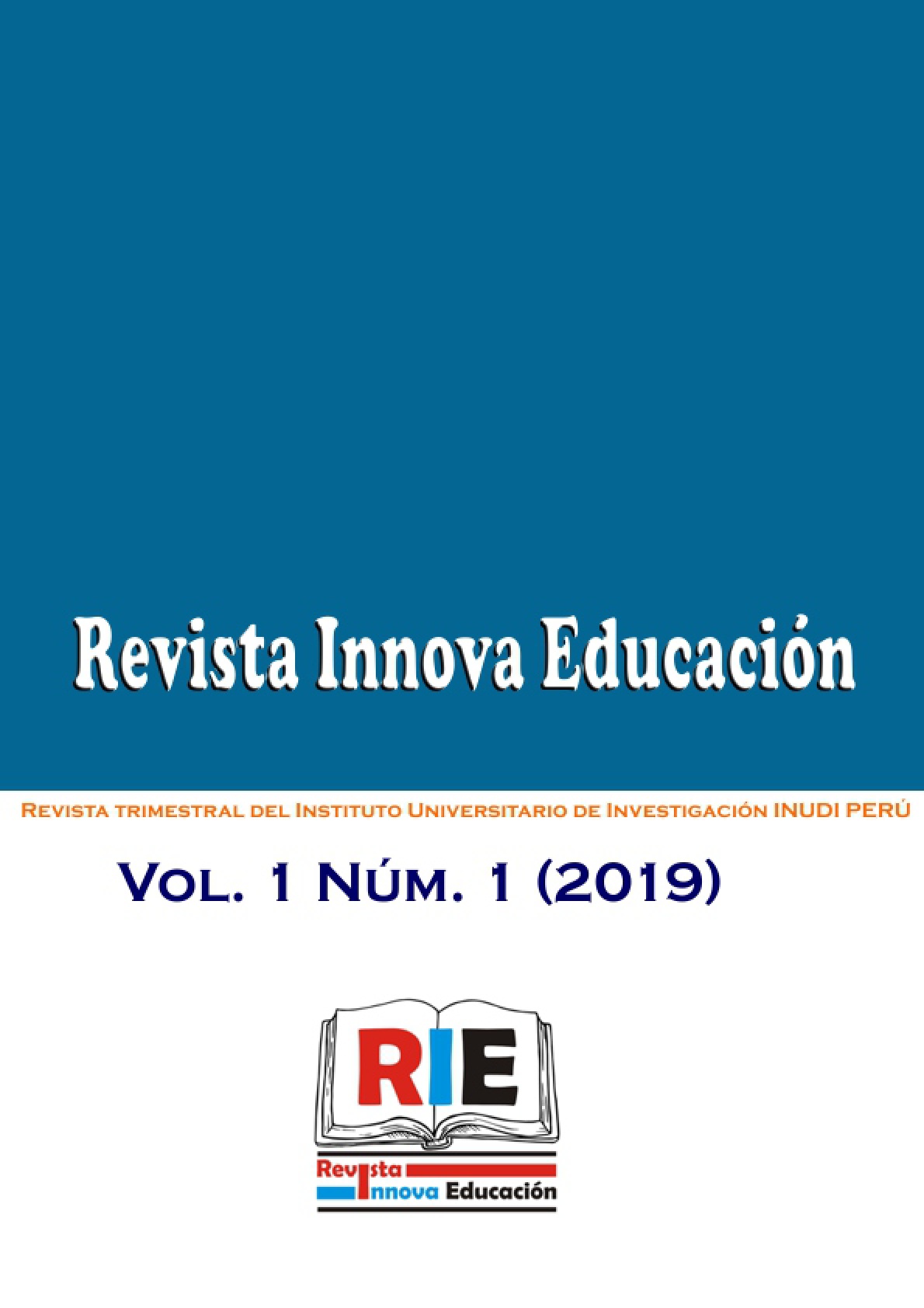Perception of the classroom climate by the students of the Secondary School Professional School
DOI:
https://doi.org/10.35622/j.rie.2019.01.008Keywords:
Classroom climate, class management, satisfaction, evaluation, cohesionAbstract
The purpose of the research is to describe the perception that students show regarding the climate of the university classroom, the population and study sample is composed of students of the Secondary School Professional School, the type of research is descriptive, the design is descriptive, diagnostic , the technique used is the survey, the questionnaire is called university classroom climate, being of the licker type, which consists of a set of assertive items expressed in categories that were answered by the respondents. The information collected in statistical tables and graphs is systematized, using the percentage measure in its reading and interpretation, considering the scales of agreement (A) and completely in agreement (CA), the results show us that regarding the dimensions: cohesion, satisfaction , personalization, task orientation, innovation, evaluation and class management, a percentage measurement of less than 62% is shown that corresponds to the dimension oriented to the task and a percentage measure greater than 79% corresponding to the personalization dimension. In sum, the dimensions under study show a favourable classroom climate.
References
Abdón, I. (2003). Aprendizaje y desarrollo de las competencias. (C. editorial Magisterio, Ed.). Bogotá.
Alfaro, B. y Capella, J. y Córdova, M. (2009). Gestión del conocimiento. (I. G. S. R. SAC, Ed.). Lima - Perú.
Biggs, J. (2015). Calidad del aprendizaje universitario. (N. S. de Ediciones, Ed.). Madrid.
Carrasco, S. (2006). Metodología de la investigación. (E. S. Marcos, Ed.). Lima - Perú.
Corbalán, F. (2006). La matemática aplicada a la vida cotidiana. (S. Edit. Graó, de IRIF, Ed.). España.
Díaz, F. & Hernández, G. (1999). Estrategias docentes para un aprendizaje significativo. (M.-H. E. S. de CV, Ed.). México.
Durán, G. (n.d.). (PDF) Principios de Aprendizaje Efectivo: Contexto de la Clase de Matemática II. Retrieved from https://www.researchgate.net/publication/257360656_Principios_de_ Aprendizaje_Efectivo_Contexto_de_la_Clase_de_Matematica_II
Évano, C. (2006). La gestión mental. (E. GRAÓ, Ed.). España.
Ferreiro, R. & Espino, M. (2009). El ABC del aprendizaje cooperativo. (E. T. S. de CV, Ed.). México.
Gimenez, J. & Santos, L. & Da Ponte, J. (2004). La actividad matemática en el aula. (S. Edit. GRAÓ de IRIF, Ed.). España.
Gorgorió, N. & O. (2000). Matemática y Educación. (S. Edit. GRAÓ de IRIF, Ed.). Barcelona.
Hernández, R. & Fernandez, C. & Baptista, P. (2010). Metodología de la investigación. (S. de C. McGraw-Hill/Interamericana Editores, Ed.). México.
Kerlinger, F. & Lee, H. (2002). Investigación del comportamiento. (E. M. H. I. editores S. de CV, Ed.). México.
L., V. (n.d.). diseno_instrumento.pdf. Retrieved January 12, 2017, from http://e-spacio.uned.es/fez/eserv/bibliuned:20337/diseno_instrumento.pdf
Lizarzaburu, A. & Zapata, G. (2001). Pluriculturalidad y aprendizaje de la matemática en américa latina. (M. SL, Ed.). Madrid.
Lorenzo, M. (1999). El liderazgo educativo en los centros docentes. (E. L. M. SA, Ed.). Madrid.
MINEDU. (n.d.). Compromiso de maestro: formación en la práctica. Lima - Perú.
MINEDU. (2009a). Diseño curricular nacional de educación básica regular. Lima - Perú.
MINEDU. (2009b). Participación y clima institucional. Lima - Perú.
Morín, E. (2007). Los siete saberes necesarios a la educación del futuro. (E. magisterial servicios Gráficos, Ed.). Lima - Perú.
Ríos, D. & Bozzo, N. & Marchant, J. & Fernández, P. (2010). Factores que inciden en el clima de aula universitario. Retrieved March 17, 2017, from http://www.redalyc.org/articulo.oa ?id=27018888004
Romero, C. (2007). La escuela media en la sociedad del conocimiento. (E. N. Educativas, Ed.). Lima - Perú.
Sáez, C. (2017). El buen clima en el aula: una propuesta para su instauración. Universidad Internacional de la Rioja. Retrieved from https://reunir.unir.net/bitstream/handle/ 123456789/4958/SAEZ GUILLEN%2C CRISTINA.pdf?sequence=1&isAllowed=y
Sánchez, H. (2007). Cómo desarrollar el pensamiento creativo. (E. V. Universitaria, Ed.). Lima - Perú.
Thales, S. (1991). Estándares curriculares y de evaluación para la educación matemática. Sevilla.
Torres, A. (2007). Educación matemática y desarrollo del pensamiento matemático. (E. Rubiños, Ed.). Lima - Perú.
Downloads
Published
Issue
Section
License
Copyright (c) 2019 Alfredo Castro, Sara Farfán, Karen Ortega, Pierina Velezvia

This work is licensed under a Creative Commons Attribution 4.0 International License.



























